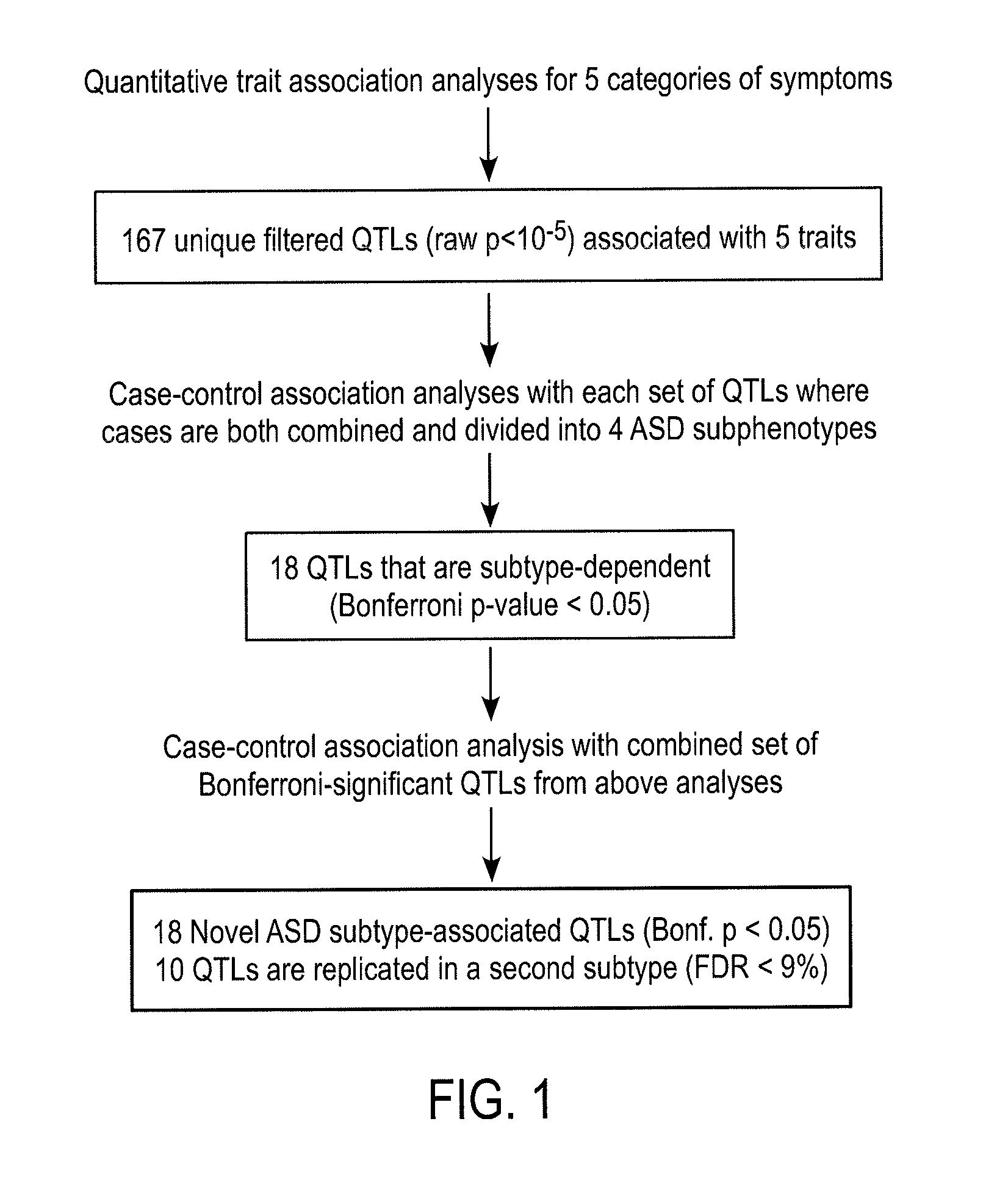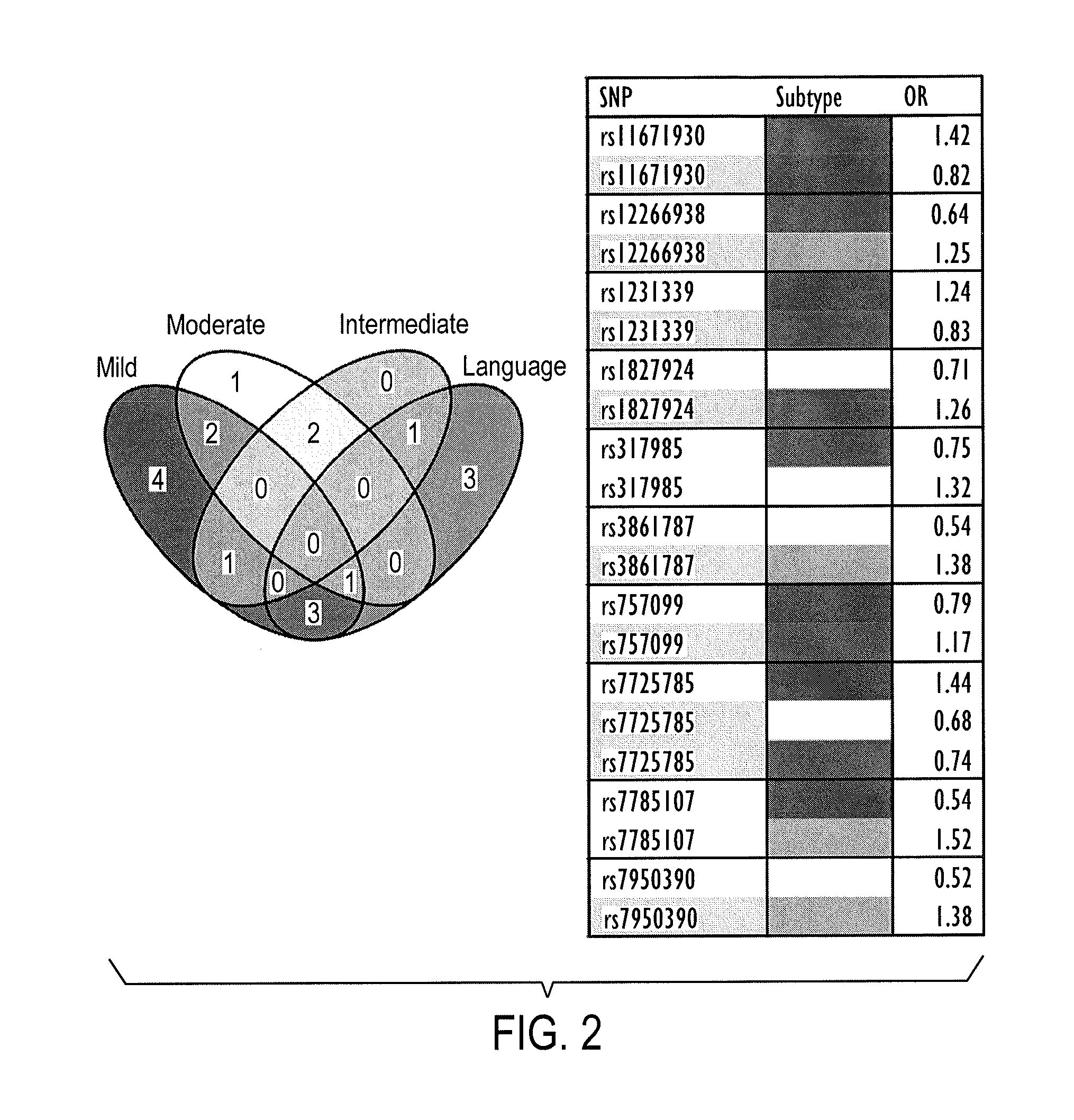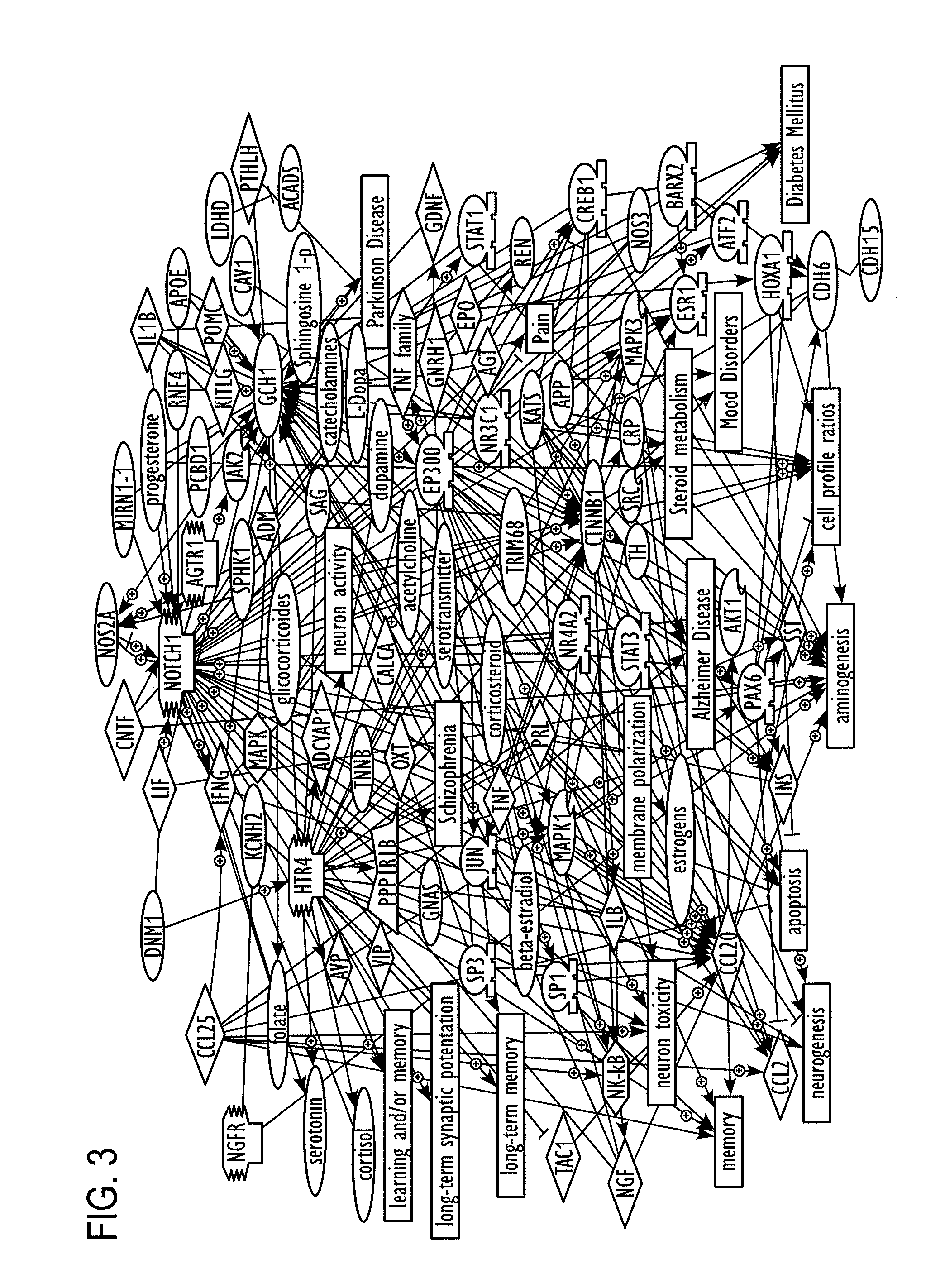Single Nucleotide Polymorphism Biomarkers for Diagnosing Autism
a single nucleotide polymorphism and biomarker technology, applied in the field of single nucleotide polymorphism biomarkers for diagnosing autism, can solve the problems of lack of awareness, social imitation and symbolic play difficulties, and place an immense economic burden on society
- Summary
- Abstract
- Description
- Claims
- Application Information
AI Technical Summary
Benefits of technology
Problems solved by technology
Method used
Image
Examples
example 1
[0243]Reanalysis of published genome-wide association data from the Autism Genetics Resource Exchange (AGRE): The use of quantitative traits and subphenotypes for association analyses reveals novel autism subtype-dependent genetic polymorphisms
[0244]In this Example and Examples 2-7 infra, results are presented from a reanalysis of published genome-wide association data from the Autism Genetics Resource Exchange (AGRE) which employs the use of quantitative traits and subphenotypes for association analyses and reveals novel autism subtype-dependent genetic polymorphisms
[0245]The heterogeneity of symptoms associated with autism spectrum disorders (ASD) has presented a significant challenge to genetic analyses. Even when associations with genetic variants have been identified, it has been difficult to associate them with a specific trait or characteristic of autism. In Examples 2-7, quantitative trait analyses of ASD symptoms combined with case-control association analyses using distinc...
example 2
GWA and ADI-R Data Used for this Study
[0246]Genome-wide association data from the study by Wang et al. (9) was downloaded from the Autism Speaks website at ftp: / / ftp.autismspeaks.org / Data / CHOP_PLINK / AGRERELEASE.ped. For this study, the file named CHOP.clean100121 was used where the data was “cleaned” by Jennifer K. Lowe in the laboratory of Daniel H. Geschwind, M.D., Ph.D. at UCLA. The cleaning procedure involved extensive sample and pedigree validation, exclusion of SNPs a) missing >10% data, b) with HWE p10 Mendelian errors. The final dataset included 4327 genotyped individuals and 513,312 SNPs on the Illumina HumanHap550 Bead Chip. Autism Diagnostic Interview-Revised (ADI-R) assessments for 2939 individuals were obtained from Autism Speaks through Dr. Vlad Kustanovich of the Autism Genetics Resource Exchange. Of these, 1867 individuals were among the cases genotyped by Wang et al. (9). Scores of 123 items on the ADI-R score sheets of each individual were analyzed as described by ...
example 3
Determination of Quantitative Traits
[0247]Raw item scores from the Autism Diagnostic Interview-Revised (ADI-R) score sheets of 2939 ASD cases were summed for 5 categories of symptoms, or traits, associated with ASD spoken language skills, non-verbal communication, play skills, social development, and insistence on sameness / ritualistic behaviors. The specific items used to obtain the total score per category for each individual, shown in Table 9, were noted in an earlier study (13) to exhibit average differences in severity among several subtypes of ASD, described below. The sum of items within each of the 5 categories were used as quantitative traits for genetic association analyses using the genotype data reported by Wang et al. (9). Profiles of the traits across the 2939 individuals are shown in FIG. 4.
PUM
| Property | Measurement | Unit |
|---|---|---|
| mean melting temperature | aaaaa | aaaaa |
| mean melting temperature | aaaaa | aaaaa |
| Disorder | aaaaa | aaaaa |
Abstract
Description
Claims
Application Information
 Login to View More
Login to View More - R&D
- Intellectual Property
- Life Sciences
- Materials
- Tech Scout
- Unparalleled Data Quality
- Higher Quality Content
- 60% Fewer Hallucinations
Browse by: Latest US Patents, China's latest patents, Technical Efficacy Thesaurus, Application Domain, Technology Topic, Popular Technical Reports.
© 2025 PatSnap. All rights reserved.Legal|Privacy policy|Modern Slavery Act Transparency Statement|Sitemap|About US| Contact US: help@patsnap.com



